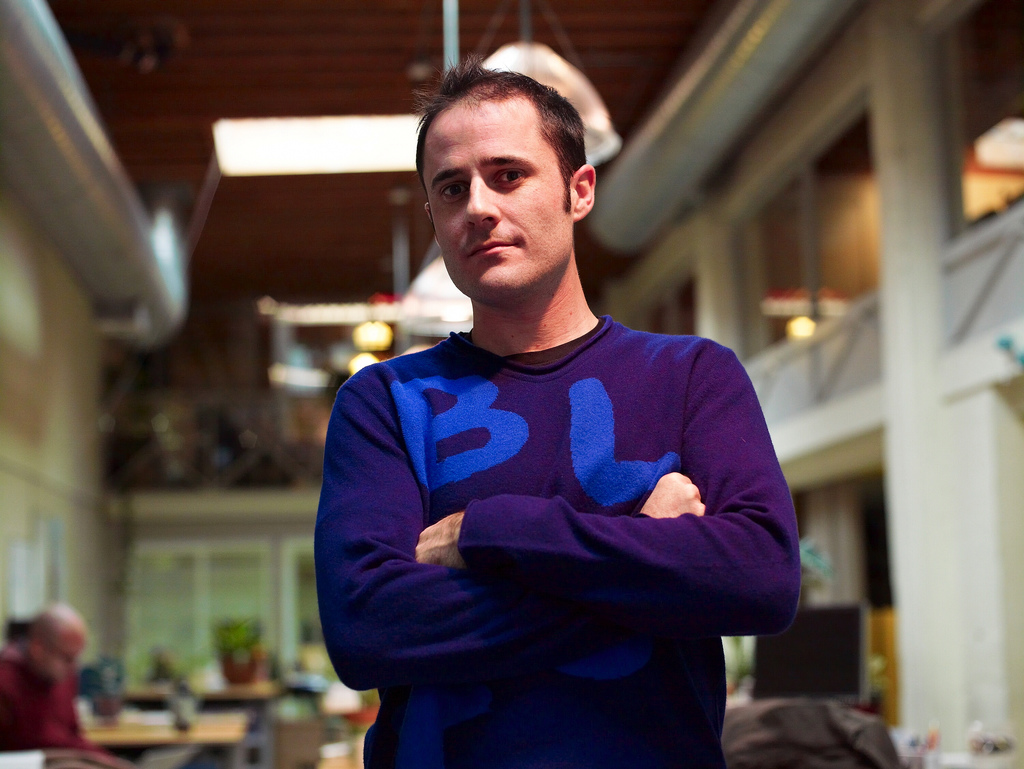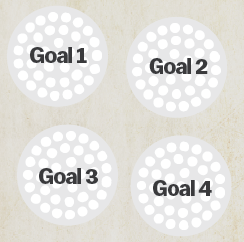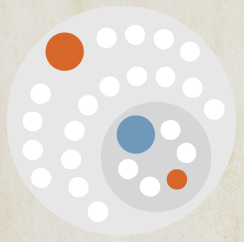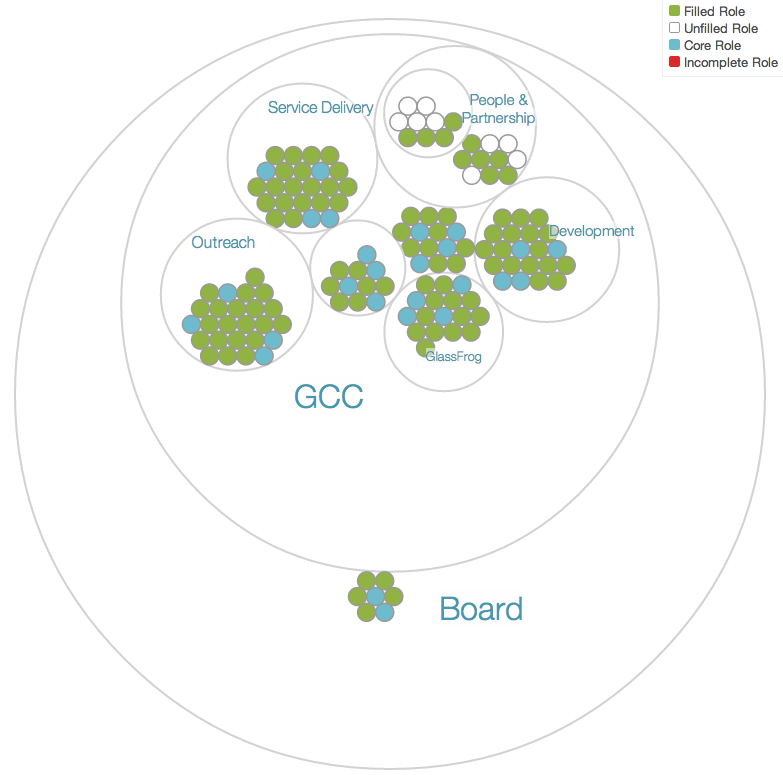/cdn.vox-cdn.com/uploads/chorus_image/image/35449120/4637027240_8a32155c53_o.0.jpg)
The latest management trend to sweep Silicon Valley requires CEOs to formally relinquish their authority and grants special protection for every employee to experiment with ideas. It's called holacracy and big name tech leaders have jumped on the bandwagon.
Twitter co-founder Evan Williams adopted it for his new blogging platform startup, Medium. The management movement started making headlines when Zappos CEO Tony Hsieh announced that he will transition his entire Las Vegas company — with a billion dollars of revenue and 1500 workers — to holacracy by the end of 2014.
Can this unconventional management scheme actually work? To explore whether Zappos's plan was crazy or brilliant, I recently traveled to the company’s Las Vegas headquarters. I spent a week with Hsieh, his executive team, and Zappos departments that are currently transitioning to the new system. In daytime interviews and drinks after work, I got a first-hand look at both the anxiety and hope that an overhaul inspires in an established tech giant.
The experience convinced me that something like holacracy is the future of management. For years, Silicon Valley's famously collaborative management style has seemed like a haphazard extension of the anti-authoritarian, novelty-seeking personality of first-time tech CEOs. It was only a matter of time before someone came up with a system that codifies these values and practices. Read on to learn how holacracy works and why it could transform how America does business.
What is holacracy?
Holacracy is management by committee with an emphasis on experimentation. The CEO formally relinquishes authority to a constitution and re-organizes everyone into decentralized teams that choose their own roles roles and goals.
Why would any boss willingly do that?
Advocates for holacracy argue that centralization of power suffocates innovation. "Especially in today’s world, where everything is changing much faster than it was 10 years ago, I think flexibility and adaptability is what’s actually going to be the competitive advantage. And holacracy allows for faster flexibility and adaptability," Hsieh told me as we rode to a startup party in a warehouse on the outskirts of Downtown Vegas.

Evan Williams, co-founder of Blogger, Twitter, and Medium (Joi Ito)
Holacracy is part of a broader trend towards managerless decision making, according to Texas A&M management professor Stephen Courtright. "Based on longitudinal surveys, less than 20% of Fortune 1,000 companies had team-based structures in 1980," he told me in an email, "compared with 50% in 1990 and 80% in 2000."
Especially in chaotic industries, it pays for the CEO to delegate as much authority as possible in order to encourage experimentation.
"It's a management methodology and set of practices that is all about adaptation," Medium’s Evan Williams told me. "It's a great system, it's a great way to run meetings; you tap into the intelligent perspective of everybody in the room and it's more efficient."
But, the boss is still in charge, right?
Kind of. A CEO could unilaterally decide who leads each team, but it would undermine the trust of the company and the entire committee structure built on top of it. The constitution in holacracy works like the constitution in some fledgling democracies. The president could declare martial law and rule by fiat, but things work better for everyone if he abides by self-imposed limitations.
So that's the only unilateral decision he's allowed to make: dictatorship or self-governance.
How is holacracy different than normal team-based management?
In a traditional business, most workers take on roles that are way beyond their job description: they organize social events, help with hiring, or design a new marketing strategy. Holacracy tries to make all these miscellaneous roles explicit, creating teams ("circles") around every possible thing a worker could do for a company.
"What happens in a traditional organizational hierarchy structure is that most people play a lot of different roles but those roles aren’t defined," explained Zappos executive Fred Mossler. "Holacracy forces you to define the work that you do and it forces you to define your roles and accountabilities."
In Zappos's holacracy, a typical call center worker could hold additional official duties in planning social events, corporate social responsibility, designing the lunch menu, or on an advertising campaign.
What does this have to do with being more innovative?
No one at Zappos, not even the CEO, can shoot down an employee's idea unless it will obviously hurt the company. In holacracy's legalistic terms, "a valid objection" must "arise from known data, or, if predictive, there would not be an opportunity to adapt before significant harm could be done."
In other words, if someone has been assigned a role, they can fulfill it however they like unless their plan involves something that is already known to end in disaster.
The justification is that traditional businesses tend to litigate novel ideas into oblivion — through the well-intentioned road of improvement. "If you just have a better idea, that’s not a valid objection," explained human relations associate Kelly Wolske, over lunch with a group of her colleagues that had been early Holacracy adopters. "We don’t want this governing by consensus and governing by committee. If it’s safe to try, if it’s not going to move us backwards or cause us harm, okay then."
How do workers decide who's in charge?
Authority is doled out in occasional "governance" meetings, where roles and their responsibilities are outlined. The "leadlink" (a.k.a manager) for a circle starts out by appointing someone to facilitate the conversation, and everyone, in clockwise sequence, is allowed to give an opinion, become a candidate for a role, and discuss what everyone's goals should be.
You can watch a simulation of a governance meeting below. If bureaucratic meetings are your idea of fun, this video is like Transformers on crack. For the rest of us, it's like Ambien, but deadlier.
This still sounds like hierarchy.

In function, committees ("circles") are often identical to the layers of hierarchy holacracy claims to replace. A general "super circle" is composed of the major business divisions, like marketing and human relations, with each department vice president appointed as the manager of a sub-circle committee, neatly delineating a chain of authority down to more detailed circles.
In this way, holacracy is a traditional hierarchy, with one very important exception: employees can be both a superior and subordinate to the exact same person.

Delaney and Bailen are part of a pool of employees.

Based on skills, these employees are in circles with different goals. Each circle can have subcircles.

Delaney is leader of one circle. Bailen is leader of a circle within that. If Bailen removes Delaney from the subcircle, Delaney is still his leader in the larger group.
Here is how Zappos's human relations ("people ops") director, Hollie Delaney, explained a situation where she is both superior and subordinate to the same person:
People Ops is our super circle. I am the Lead Link of People Ops. People is a circle below People Ops. Michael Bailen is the Lead Link of People. Then we have Employee Relations as a sub circle of People. I am the Lead Link of Employee Relations. I also hold roles in People and Employee Relations. So in this example, I am Mike's boss in some cases, but Mike is my boss in others.
Bailen, as the leadlink of employee relations, could fire Delaney from her position in the circle, yet remain her subordinate in people ops.
If holacracy is about democratic decisions, why not vote to approve experiments?
Holacracy is not democracy. "Pure democracy is one of the least efficient ways of governing," human relations associate Kelly Wolske told me. "The fact remains that consensus building is a waste of time because If we’re gonna vote, what are we gonna do? We’re going to have to say that it has to be 12 out of 20 and are we going to expect a quorum?"
Holacracy would rather govern through forgiveness than permission, and lets people act without the need to lobby colleagues for support. But, if someone screws up, then it requires hauling everyone back to a meeting.
Holacracy is closer to what political scientists call epistemic democracy, where decisions are based more on persuasion and expertise than majority rule. There's lots (and lots) of discussions in holacracy, but elected individuals are given permission to act how they please until they screw up.
Has holacracy produced any breakthrough successes for Zappos?
It’s too soon to say. Hsieh introduced me to one bubbly 20-something employee who we met for a late-night beer at a local bar. She was hired to manage Zappos's popular "Prom" page of glistening high school models dressed in fairy tale gowns. It turns out this employee was also a closet computer geek who retrofitted circuit boards to video game consoles in her spare time.
"Fashion is my number one thing, but technology is what I do on my weekends ... I have pages and pages of things that I think should be better, but I was told that wasn't my job," she told me. When holacracy eventually comes to her department, Hsieh believes that unexpected talents like hers will ultimately prove more valuable than pre-defined responsibilities.
Holacracy is designed for risk-happy entrepreneurs. "Humans are terrible at planning," Twitter co-founder Evan Williams explained to me. "We’re terrible at predicting, and if you set up a system in which you have to follow the plan, and your predictions have to be right, you’re much more likely to fail than if you set up a system where you only really plan a little bit at a time and you predict, but are open to being wrong and in fact looking for where you’re wrong."
Williams believes a lot of failed dotcom startups in the 1990s suffered from overconfidence and excessive planning. "I think a lot of their fatal errors were assuming they had it all figured out," he says. When the bubble popped, they learned — too late — that they were wrong.
Holacracy assumes the best of each employee. Wolske explained to me that holacracy assumes that people "are not jerks, they’re not stupid and they’re not evil." So, the whole company can "trust that it is safe for them to energize those roles in the best way they see fit until we get data that says otherwise." In other words, if you think employees need constant oversight, holacracy is your own personal bureaucratic nightmare.
How long does it take to transition to holacracy?
I surveyed a few departments to see how much time the transition takes away from them doing their actual jobs. In a small, windowless meeting room tucked away in the fourth floor of Zappos HQ, engineering manager Ryan Quinn told me that it took his understaffed IT group "five days total time, plus watching videos" for each employee.
Though the team barely has any flexible time, Quinn's hopeful that the added transparency of Holacracy circles will finally reveal just how much extra work his team does.
Larger teams can take much longer. Transitioning a 100-plus person department can take "a good six to nine months to get everyone practicing in a circle," says call center manager Moria Daily, after a big town-hall meeting with a captive audience of Zappos's largest department.
This still sounds awkward and disagreeable.
For many workers, yes, it is. "When you first go into a meeting, it's going to feel weird," said call center director Rob Siefger to a large crowd gathered to learn about holacracy. After hearing about their meeting-happy fate, a young women breathed "Yikes" behind me.
Holacracy isn't for everyone and some find the transition very awkward. The true test of Zappos's experiment will be revealed when holacracy is expanded beyond the enthusiastic early adopters.
How do you fire people?
You have to royally screw up in one of your positions, or underperform in many of them to be fired. "If I’m not energizing anything really well," Delaney explained "then, yes, that would be where we would discuss discipline and termination."
How does everyone keep track of all this?

There's software. Holacratic organizations streamline the committee madness through GlassFrog software, an online database of employee roles and a dynamic checklist for sequencing meetings.
What's next for Zappos?
By the end of the year, Zappos will become the largest company to have adopted holacracy. The big unknown is how people will be paid. Right now, they're given a salary based on their old roles, but once the company is organized into committees it will need a way to compensate employees for every role they take.
However Zappos sorts out these details, Hsieh says he’s confident that the more control he gives up, the better off his baby will be: "How do we restructure Zappos so it functions more like a city and less like a bureaucratic organization as we add more employees? By distributing more authority, more control, it may seem counter-intuitive, but you actually increase the productivity and innovation of the organization."
"I'm hoping that [holacracy] will require me to make fewer decisions, because that doesn't scale, if every decision has to come from me," Hsieh says. "The mayor of a city doesn't tell its citizens what to do."